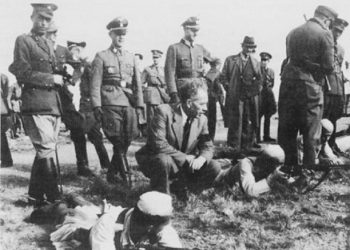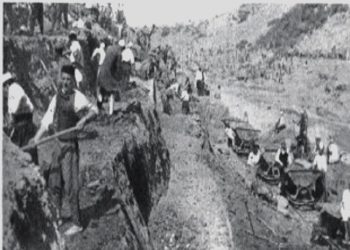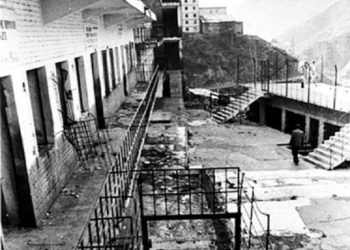Part two
The Unknown Side of Kosovo’s Former Political Leader
– Did Fadil Hoxha have a hand in the murder of Shaban Polluzha, the Tivar Massacre, or the 1981 demonstrations? –
Memorie.al / Regarding the murder of Shaban Polluzha, killed by communists led by Fadil Hoxha. The latter, while alive, had said that Shaban Polluzha had been liquidated, and after that, Drenica had calmed down. Furthermore, the communist Hoxha had said that people from Drenica had also participated in Polluzha’s liquidation. The truth about the 1981 demonstrations – “the truth about who incited those protests” – must also be clarified concerning the term “counter-revolution” and the ideological-political differentiations.
Continued from the previous issue
The Second Session of the National Liberation Council of Kosovo, known as the Prizren Assembly (July 1945), was also held under military administration, and here Kosovo was annexed by Serbia. The decisions of Bujan were overturned in this assembly. Both Albanians and Serbs who voted in Prizren in favor of the annexation were those who had refused to vote, were imprisoned and liquidated. Shaban Polluzha’s house was razed to the ground several times. Much of value was burned and destroyed.
Along with many other items, the few photographs of Shaban Polluzha were also burned. As his son, Ramadani, says, “Someone had taken two or three photographs of my father, and until before World War II, they were in the house. Only one survived. Since our house was often raided by the OZNA [Yugoslav Secret Police], we wrapped that photograph in paper and put it between two planks in the barn to preserve the memory of our father.”
However, the prolonged time in non-climatic conditions and erosion had damaged it. His only photograph was taken out from between the barn planks in 1990, when I was looking for a photo for publication. “It is difficult to get an image of my father from this remaining photograph,” says Ramadani, who was with him until he fell heroically in the towers of Dvoran in Terstenik, on February 21, 1945, along with a number of fighters.
Shaban Polluzha’s body was thrown into the Drenica River by his son Ramadani and a group of comrades, breaking a part of the ice, and only after 6 weeks would it be retrieved and buried. The gravestone showed a birth year 15 years older than he actually was. This was done intentionally by the family to mislead people into thinking it was someone else. Shaban Polluzha was a taboo subject for 50 years.
On December 13, 2013, a scientific roundtable was held under the patronage of the then-Speaker of the Assembly of the Republic of Kosovo, Jakup Krasniqi, marking the 70th anniversary of the Bujan Conference (1943–’44). On that occasion, Krasniqi declared: “The Bujan Assembly, organized by the leaders of the National Liberation units of Kosovo and Albania, is the glorious history of our modern history and is the precursor to this Assembly of today’s Republic of Kosovo!” One of the ideologues of Bujan was the former communist leader of Kosovo, Fadil Hoxha, about whom there are two versions of history: a negative and a positive, which is also illustrated by the reactions for and against the erection of his bust in Gjakova.
In this regard, I am bringing you below some facts that are not widely known to the masses about this figure, and which are often denied.
On January 31, 1943, during World War II, the Bujan Conference was held. On January 2, 1944, after reviewing for three consecutive days the problems arising from the war against the occupier, the Conference issued a final document, which states: “Kosovo and the Dukagjin Plain is a province inhabited by a majority of the Albanian people, who, as always, so today, wish to unite with Albania.”
A few days ago, the former Chairman of the Provincial Committee, Azem Vllasi, in an interview for a daily newspaper, said that the organizers of the 1981 demonstrations did not seek to improve the conditions of Kosovo Albanians but aimed to replace Yugoslav communism with Stalinist communism. This statement provoked strong reactions from many organizers of these demonstrations, including Vllasi’s claim that the arguments that the 1981 protests raised national consciousness among Kosovo Albanians are unfounded, as “national consciousness” has been continuously rising.
The “Trepça” Combine can be taken as proof of this; in the 1970s, when it was led by Veli Deva, it had 11 units (each with 250–1,000 workers), where 75 percent of the cadres were Albanian and in leadership positions. For this, the Albanian leaders of Kosovo were under pressure. It is even said that Deva, in a political meeting, had stated: “We are in a tight spot from the Serbs here in ‘Trepça’!” Meanwhile, let’s not forget that in 1978, only 24 years after the end of World War II, Kosovo had 400,000 students in high schools and elementary schools. According to academic Mark Krasniqi, between 1970 and 1990 alone, over 33,000 Albanian students graduated, 213 obtained doctorates, and 160 master’s degrees…!
So, there was emancipation and an increase in national consciousness and this is also evidenced by the raising of Kosovo’s status within the Yugoslav federation. Hoxha removed Metohija from the name of Kosovo, while Vllasi, in his interview, mentions that they openly discussed the republic status even during the constitutional changes in ’68 and ’69.
This is also stated by Serbian historians. Because, after the Brioni Plenum (1966), that is, after the fall of the Yugoslav Interior Minister and anti-Albanian Aleksandër Ranković, the position of Albanians in Yugoslavia began to advance, especially after the constitutional changes of 1974. Serbian media, quoting Tito’s archives, wrote that Hoxha had requested in 1966 that Metohija be removed from the name of Kosovo, which happened, and that Kosovo should adopt its own laws, including the Supreme Court. That is, to be equal to the other units of Yugoslavia.
Meanwhile, Serbian historian Miloš Mišović, in his book “Ko je tražio republiku: Kosovo 1945-1985” (Who Asked for the Republic: Kosovo 1945–1985), wrote that on April 22, 1968, at the meeting of the Presidency of the Executive Committee of Kosovo, Fadil Hoxha demanded: “The flag of Kosovo should not be a fabricated flag…! In Kosovo, the majority is Albanians, and the flag must be Albanian.”
“Hoxha,” it is stated there, “demanded that Kosovo have its official flag, emblem, and its own state holiday. The Republic of Kosovo was demanded here.” The position of Albanians advanced after 1974, but things changed after the 1981 demonstrations, for which it must be admitted that no one can give a clear explanation, especially regarding their organization.
“The main slogan on March 26, at the Student Center, where I was also present, was: ‘Glory to Marxism-Leninism,'” says Vllasi. It is true that the slogans of the Albanian demonstrations often contradicted each other. Thus, Branko Horvat, in his book “Kosovsko pitanje” (The Kosovo Question), wrote that in the 1981 demonstrations, the slogans and groups were divided as follows:
- “We want a Republic, either by agreement or by war,” “We are Albanians, not Yugoslavs,” “Kosovo belongs to Kosovars”;
- “Trepça works, Belgrade builds”;
III. “We love the imprisoned comrades,” “Long live Adem Demaçi”;
- “Long live the brotherhood of the Albanian people,” “Unification of Albanian territories”;
- “Long live Marxism-Leninism,” “Down with revisionism”;
- “Someone in the armchair, someone without bread,” “How long in the basement,” “No talks with the Red Bourgeoisie,” “Long live the working class,” “We demand better conditions!”
Fadil Hoxha had not hesitated to mention national unification!
Historian Shaban Braha has said that; “For the Tivar tragedy [massacre], Koçi Xoxe in Tirana and Aleksandar Ranković in Belgrade knew best.” Also, according to him, in February 1945, Fadil Hoxha told Tito: “You know what promises you gave us during the National Liberation Anti-Fascist War, and you must keep them, otherwise Yugoslavia will be at war with the Albanians for a long time.”
On the occasion of Braha’s death, former Prime Minister Hashim Thaçi – who had Azem Vllasi as a political advisor – sent a telegram of condolence in 2013, with this content: “The work and figure of Shaban Braha will remain an unforgettable model of the tireless activist and patriot whose commitment and love for the homeland are inexhaustible and constant.”
On the other hand, academic Mark Krasniqi, in an interview for Kosova-TV, had said that; after conflicts Fadil Hoxha had with Stanoje Aksić of Lipjan, who was a senior official in Serbia, he had told him directly (Krasniqi): “There is no other solution for Kosovo, except unification with Albania.”
Meanwhile, Milan Vučinić, in his book “Zasto Kosovo ne moze da bude republika” (Why Kosovo Cannot Be a Republic!), says that Fadil Hoxha said in 1958: “Since the majority in Kosovo is Albanians, this will certainly go to Albania.” Thus, unlike today’s Kosovan politicians, Hoxha, even in a monist system, had dared to mention unification with Albania.
Fighters from two blocs: Fadil Hoxha embraces Hysen Tërpeza
Nevertheless, we have many versions of history, for and against Enver Hoxha, for and against Fadil Hoxha, just as we have for and against many other figures, starting with Skanderbeg. But no one can deny that there were tendencies by some communist personalities that, as Katjusha Jashari told the BBC; “in favor of the Albanians, the system should be changed within the existing Yugoslav system.” Jakup Krasniqi was arrested after the 1981 demonstrations. Naturally, no one can agree with this arrest or the suffering he went through. However, he and everyone should be open to debates about the circumstances of historical changes, such as the 1981 demonstrations.
Hysen Tërpeza and Fadil Hoxha should be taken as a model for this. For the overwhelming part of the population of Kosovo, of both camps, in the new version of history, the former was and remains a model of resistance, of the movement for freedom and liberation, while the latter, a model of the Yugoslav communism sycophant. The version that Hoxha may have been more vigilant about the powerlessness of Albanians and that he tried to realize their rights through the imposed system is not very convincing for the former and current comrades and followers of Tërpeza.
But the embrace of Hoxha and Tërpeza, after the liberation of Kosovo and shortly before the death of both, is an example that demolishes many prejudices. They testified that political rivals in the transition phases are not always rivals of patriotic concepts on the one hand and concepts of treason on the other.
Fadil and Sharr Hoxha, both hated by Serbian politics!
Fadil Hoxha has been accused, from the Bujan Conference until his death, as an enemy of the Serbs. He was dismissed from all posts in 1986. Meanwhile, in 1991, he was accused of treason by Slobodan Milošević’s regime. The slogans mentioned above, said by demonstrators during 1981, were recalled. Many of the participants in these demonstrations imprisoned or not, held leadership positions in Kosovo after the war.
However, one fact should not be forgotten: before them, slogans against the Yugoslav system were written by Fadil Hoxha’s son, Sharri. Precisely for this, the Serbian press wrote during the 1980s, even claiming that Sharri had asked the waiter for a “Serbian head” to be served to him at the “Bozhur” hotel in Pristina. While this statement may be part of the propaganda, what is known is this: Branko Horvat wrote that in 1963, Sharri Hoxha, with a group, wrote the slogans: “Down with Tito,” “Down with Yugoslavia,” “Long live Enver Hoxha,” “Long live Albania.”
According to documents in the Yugoslav Archives, the UDB [Yugoslav Secret Police] had installed microphones in the homes of Ismet Shaqiri, Ymer Pula, Mehmet Hoxha, and Fadil Hoxha. This campaign monitored the work of Albanian intellectuals such as Mark Krasniqi, Gjon Shiroka, and Enver Gjergjeku. It is suspected that Veli Deva, Xhevdet Hamza, and Drita Dobroshi were also wiretapped.
Regarding the murder of Shaban Polluzha, killed by communists led by Fadil Hoxha. The latter, while alive, had said that Shaban Polluzha had been liquidated, and after that, Drenica had calmed down. Furthermore, the communist Hoxha had said that people from Drenica had also participated in Polluzha’s liquidation./Memorie.al





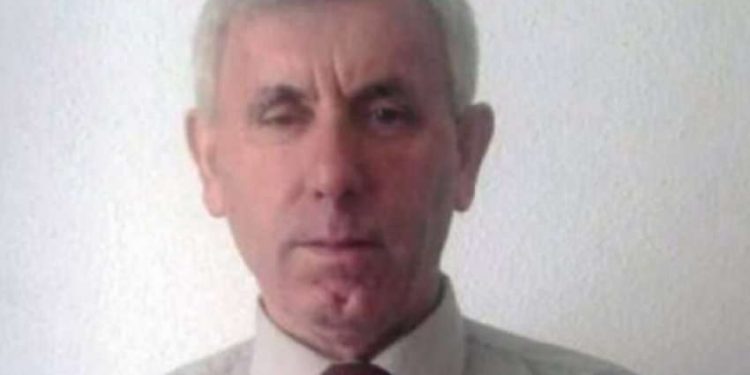
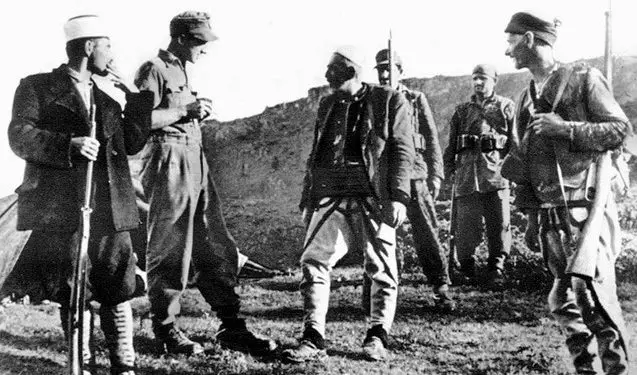
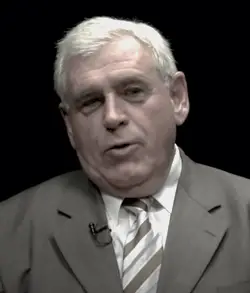
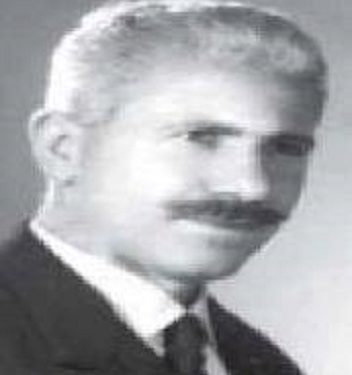
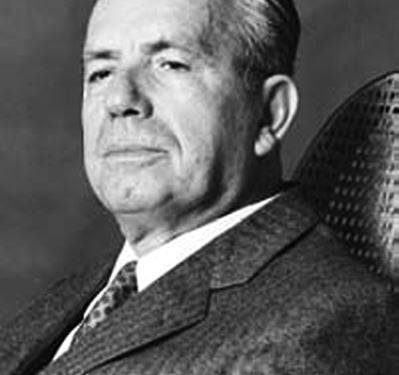
![“His capacity is quite low, he is not clear about the political situation, he only has two grades of school and has never held a book in his hand…”/The State Security document on Sulo Gradeci, Enver [Hoxha]’s escort, is revealed](https://memorie.al/wp-content/uploads/2025/11/Me-Sulo-Gradecin-ne-Dajt-350x250.jpg)

